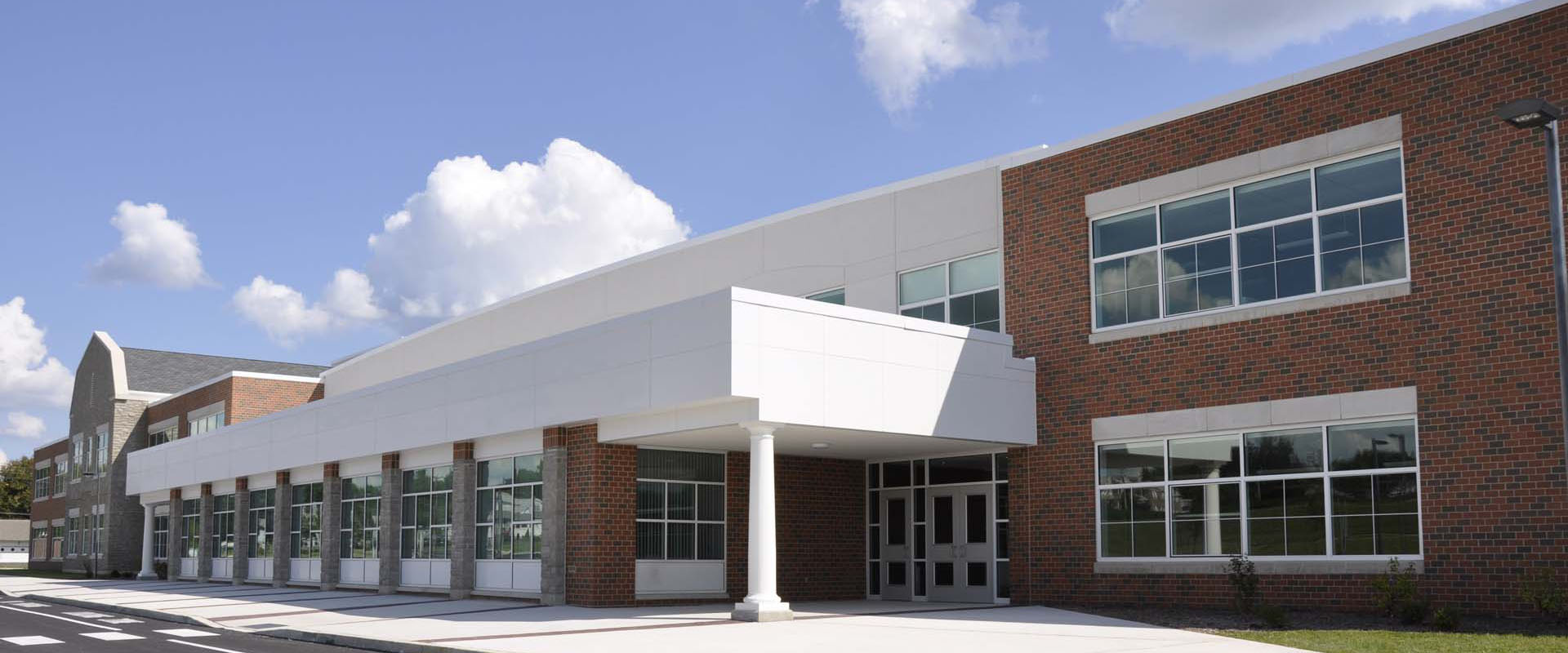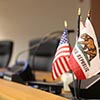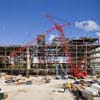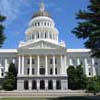California Legislature Suspends School Districts' Ability to Collect Level Three Developer Fees

July 2012
Number 44
On June 27, 2012, the Governor signed Senate Bill (SB) 1016, a budget-related bill which, among other things, suspends school districts' ability to levy "Level 3" developer fees until December 31, 2014. Although these types of fees represented part of a compromise between the interests of school districts and the building industry when SB 50 was enacted in 1998, and notwithstanding disappearing state bond funds, school districts have yet to actually collect any Level 3 fees.
Under SB 50, school districts have been able to continue levying a fee per square foot of development (commonly called a "Level 1" fee), so long as sufficient justification exists to support that fee. The current Level 1 fees are $3.20 for residential development and $0.51 for commercial. For school districts that meet certain criteria, a "Level 2" residential fee may be imposed that can be higher than the Level 1 fee, based on a specific statutory formula. The Level 2 fee is unique to each school district and must be authorized annually. In concept, Level 2 fees are the equivalent of what the state assumes will total 50% of the cost of providing facilities for students from new development.
SB 50 also resulted in the enactment of Government Code section 65995.7, pursuant to which school districts eligible for Level 2 fees may also be eligible for "Level 3" fees if the State Allocation Board (SAB) certifies that state funds for new school facility construction are no longer available. Level 3 fees are intended to be the equivalent of 100% of the cost of school facilities for new development. If and when state bond funds again become available for facilities, the difference between the Level 2 and Level 3 amounts is to be refunded either to the state or to developers. Thus, Level 3 fees represent a gap filler for when the state is unable to match its share of the cost of facilities for new development. Since its enactment, section 65995.7 has been inconsequential, as the SAB has taken the position that Level 3 fees were not triggered even when many argued that state funds were no longer available for school construction. Also, in 2002, with state funds running out, a legislative amendment disallowed Level 3 fees until the 2004 general election, when another statewide general obligation bond passed.
Effective June 27, 2012, section 65995.7 was again amended to make the authorization for Level 3 fees inoperative through December 31, 2014, regardless of the status of state funding, except under two circumstances. First, if a statewide school facilities bond passes before December 31, 2014, the section will become operative upon certification of the election in which the voters approved the bond. This exception does not appear to be very meaningful, since the passage of a statewide school facilities bond would presumably make it unnecessary for the SAB to certify that state funds are unavailable. Second, if a statewide facilities bond has not been placed on the ballot for the November 4, 2014, statewide general election by August 31, 2014, the section shall again become operative on September 1, 2014. In other words, the ability to collect Level 3 fees would be restored approximately four months earlier than otherwise allowed by the bill.
The passage of SB 50 in 1998 represented a compromise between school districts and the building industry after a prolonged debate and series of court decisions addressing the ability of school districts to receive more than the statutorily designated school mitigation amount. The industry received limitations on their obligations to pay certain fee amounts, in part in exchange for the opportunity of the districts to collect additional fees when state funding was not available for school facilities projects. The Legislature has now taken this opportunity away from the districts in a particularly troublesome economic climate, even as state bond money runs out. Developers thus have maintained all of their benefits from the SB 50 compromise, while school districts have been deprived of one of their key benefits. The reason offered for the suspension of Level 3 fees is the desire to stimulate new development, and hence the economy.
To assist school districts in navigating these and other developer fee issues, Lozano Smith's Facilities and Business Practice Group publishes its Developer Fee Handbook for School Facilities: A User's Guide to Qualifying for, Imposing, Increasing, Collecting, Using and Accounting for School Impact Fees in California. The handbook is being updated to address the most recent amendment of Government Code section 65995.7 and its effect on school districts' ability to collect Level 3 developer fees.
For information on the Handbook, contact Client Services at clientservices@lozanosmith.com or (800) 445-9430.
If you have any questions regarding developer fees or other facilities and finance issues, please feel free to contact one of our eight offices located statewide. You can also visit our website or follow Lozano Smith on Facebook.
Number 44
On June 27, 2012, the Governor signed Senate Bill (SB) 1016, a budget-related bill which, among other things, suspends school districts' ability to levy "Level 3" developer fees until December 31, 2014. Although these types of fees represented part of a compromise between the interests of school districts and the building industry when SB 50 was enacted in 1998, and notwithstanding disappearing state bond funds, school districts have yet to actually collect any Level 3 fees.
Under SB 50, school districts have been able to continue levying a fee per square foot of development (commonly called a "Level 1" fee), so long as sufficient justification exists to support that fee. The current Level 1 fees are $3.20 for residential development and $0.51 for commercial. For school districts that meet certain criteria, a "Level 2" residential fee may be imposed that can be higher than the Level 1 fee, based on a specific statutory formula. The Level 2 fee is unique to each school district and must be authorized annually. In concept, Level 2 fees are the equivalent of what the state assumes will total 50% of the cost of providing facilities for students from new development.
SB 50 also resulted in the enactment of Government Code section 65995.7, pursuant to which school districts eligible for Level 2 fees may also be eligible for "Level 3" fees if the State Allocation Board (SAB) certifies that state funds for new school facility construction are no longer available. Level 3 fees are intended to be the equivalent of 100% of the cost of school facilities for new development. If and when state bond funds again become available for facilities, the difference between the Level 2 and Level 3 amounts is to be refunded either to the state or to developers. Thus, Level 3 fees represent a gap filler for when the state is unable to match its share of the cost of facilities for new development. Since its enactment, section 65995.7 has been inconsequential, as the SAB has taken the position that Level 3 fees were not triggered even when many argued that state funds were no longer available for school construction. Also, in 2002, with state funds running out, a legislative amendment disallowed Level 3 fees until the 2004 general election, when another statewide general obligation bond passed.
Effective June 27, 2012, section 65995.7 was again amended to make the authorization for Level 3 fees inoperative through December 31, 2014, regardless of the status of state funding, except under two circumstances. First, if a statewide school facilities bond passes before December 31, 2014, the section will become operative upon certification of the election in which the voters approved the bond. This exception does not appear to be very meaningful, since the passage of a statewide school facilities bond would presumably make it unnecessary for the SAB to certify that state funds are unavailable. Second, if a statewide facilities bond has not been placed on the ballot for the November 4, 2014, statewide general election by August 31, 2014, the section shall again become operative on September 1, 2014. In other words, the ability to collect Level 3 fees would be restored approximately four months earlier than otherwise allowed by the bill.
The passage of SB 50 in 1998 represented a compromise between school districts and the building industry after a prolonged debate and series of court decisions addressing the ability of school districts to receive more than the statutorily designated school mitigation amount. The industry received limitations on their obligations to pay certain fee amounts, in part in exchange for the opportunity of the districts to collect additional fees when state funding was not available for school facilities projects. The Legislature has now taken this opportunity away from the districts in a particularly troublesome economic climate, even as state bond money runs out. Developers thus have maintained all of their benefits from the SB 50 compromise, while school districts have been deprived of one of their key benefits. The reason offered for the suspension of Level 3 fees is the desire to stimulate new development, and hence the economy.
To assist school districts in navigating these and other developer fee issues, Lozano Smith's Facilities and Business Practice Group publishes its Developer Fee Handbook for School Facilities: A User's Guide to Qualifying for, Imposing, Increasing, Collecting, Using and Accounting for School Impact Fees in California. The handbook is being updated to address the most recent amendment of Government Code section 65995.7 and its effect on school districts' ability to collect Level 3 developer fees.
For information on the Handbook, contact Client Services at clientservices@lozanosmith.com or (800) 445-9430.
If you have any questions regarding developer fees or other facilities and finance issues, please feel free to contact one of our eight offices located statewide. You can also visit our website or follow Lozano Smith on Facebook.
As the information contained herein is necessarily general, its application to a particular set of facts and circumstances may vary. For this reason, this News Brief does not constitute legal advice. We recommend that you consult with your counsel prior to acting on the information contained herein.







